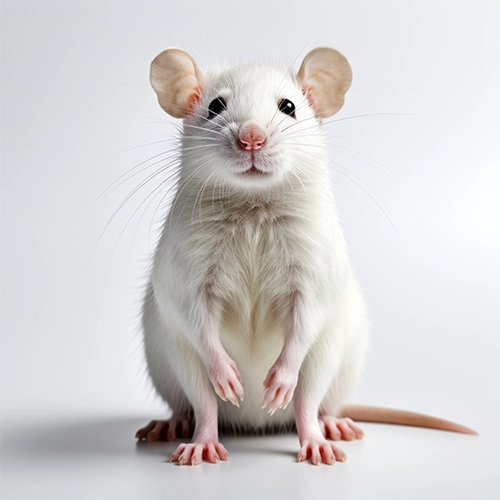A Comprehensive Guide to Species, Risks, and Effective Management Strategies



There is a vibrant world full of life deep beneath Colorado’s wild landscapes and breathtaking vistas, where even the tiniest creatures fight for survival. Among these animals, the silent but present mouse scampers over meadows, forests, and cityscapes, symbolizing adaptability and tenacity in a range of circumstances.
Mice are a significant component of Colorado’s ecosystem, creating a web of fascination and interest that demands research and understanding. In this article, we explore the world of Mice, looking into their species, risks, and effective management strategies for dealing with their infestation amidst Colorado’s breathtaking surroundings.
Understanding Mice
These cunning animals rely on their acute senses of touch, hearing, and smell to help them navigate their surroundings. They can easily adapt to their environment as long as there is something that attracts them. Their deep social dynamics is evident through their detailed communication that they express with ultrasonic vocalizations.
Mice are also quite good at solving problems because they use their natural curiosity to find and use resources. In addition, they demonstrate survival instincts with their nocturnal instincts and natural tendency to create nests. Examining the world of mice reveals an intriguing mosaic of collaboration, tenacity, and intellect highlighting the marvels of these seemingly unassuming rodents.
Preferences and Seasonal Behavior in Colorado
Because of Colorado’s distinct topography and ecology, mice flourish in the state’s varied and moderate temperature with the help of their nocturnal instincts and resilience. The high elevation landscapes of Colorado, ranging from high plains to towering mountain peaks allow mice to live in different habitats, each with unique resources and difficulties. Moderate temperatures and low humidity in many parts of the state create favorable conditions for mice to adapt and breed more successfully than in severe climates.
Mice also have access to a plentiful source of food due to Colorado’s diversified flora and variety of greenery. The state provides a diverse range of plants, seeds, and insects that make up the mice diet, ranging from grasslands to forests.



Furthermore, these little rodents have the perfect place to hide from predators and bad weather because of the state’s many nooks and crannies created by its rocky topography. The climate of Colorado affects mice’s ability to reproduce as well. Because of the prolonged mating seasons brought forth by the comparatively mild winters and pleasant summers, mice can have many litters of their young each year. Their adaptation and resilience capacity in Colorado’s environment allows them to flourish, making the state a sanctuary for these industrious rodents.
Mice Species Types in Colorado
Deer Mouse
Resilient in Colorado’s many environments, the deer mouse (Peromyscus maniculatus) is distinctive with its beautiful coat of gray and cinnamon, huge eyes, and delicate white underparts. These skilled climbers and ground feeders, thrive in a variety of environments, including woods and deserts. They are essential to the preservation of ecological equilibrium because of their widespread activity. These unique properties make Colorado’s deer mice a unique and adaptable addition to the diverse array of animals found in the state.
Western Harvest Mouse
This category of mice species finds comfort in the agricultural fields, grasslands and meadows. It is easy to identify the Western Harvest mouse by its bicolored tail and small body size. They exhibit unique adaptation skills when it comes to a wide range of settings using their agility and acute sense of smell to search for food. Its existence ecosystem highlights the complex biological tapestry in the state, portraying the delicate balance as well as nature’s resiliency.
House Mouse
In Colorado, the common and omnivorous house mouse (Mus musculus) thrives well in both urban and rural environments. This hardy rodent, distinguished by its diminutive stature, huge ears and pointed nose is an essential component of the regional ecology. While many consider them a pest, House mouse species is incredibly intelligent and resourceful, successfully navigating through diverse settings of the state.
Canyon Mouse
Deep within the rugged terrains of Colorado lies the Canyon mouse, a rodent that epitomizes resilience in its habitat. It has unique camouflage skills and remarkable agility to navigate its rocky domain, evolving amidst the arid landscapes and steep canyons. This mice species blends seamlessly into the environment with its sandy-brown fur, scampering with grace in hope of surviving Colorado’s untamed wilderness.
White Footed Mouse
Another species that epitomizes adaptability is the white-footed mouse, present in the woodlands and grasslands. They are agile rodents that explore their hunting environments with remarkable agility, thanks to their small-bodied size. Their nocturnal habits and keen sense of smell make them great foragers in the state’s ecological balance. The white-footed mouse, like other mice species exemplifies resilience in Colorado’s dynamic landscapes.



Signs of Mice Infestation
It is usual to disregard the early warning signs of a mouse infestation until the situation becomes critical. One of the earliest signs is the presence of small, black droppings along the rodent paths. You can also find inexplicable gnaw marks on structural components or food packaging, suggesting their activity. Mice are nocturnal in nature, which is why you can hear rustling or scratching sounds at night, coming from the ceiling or inside walls.
Furthermore, their urine emits a distinct musty odor that is difficult to ignore in infected spaces. Nesting materials, such as shredded paper or fabric, are usually present in isolated locations or hidden corners. Mice activity can potentially lead to fires, so it is essential to watch out for bite marks on electrical lines. Rapid discovery and response are necessary to prevent a minor infestation from advancing to a major mice problem.
Potential Risks of Having Mice At Home
There are several possible problems associated with
mice infestations, ranging from health issues to structural damage. The main reason why mice invasion poses danger to human health is that they may spread illnesses including Hantavirus or salmonellosis that transmits through their urine or droppings.
Furthermore, their constant chewing poses a risk to electrical wiring or timber structures, resulting in home fires or structural collapses. Mice are prolific breeders who multiply quickly and the rate of infestations can worsen and become a difficult issue to deal with due to their resilience.
To make matters worse, their presence also draws in other pests and predators like fleas, parasites, and snakes, which might cause harm to occupants. Furthermore, the psychological anguish brought on by a phobia of mice can interfere with day-to-day activities and jeopardize the household’s comfort and security. Therefore, in order to reduce the hazards associated with a mice-infested house, it is essential implement early and efficient pest control methods.
DIY Management Strategies
Deterring mice from entering the house requires a calculated strategy combining alertness and creativity. Homemade techniques provide good results without incorporating toxic chemicals or high- priced exterminators. Baiting humane cheese traps helps catch these small burglars before transfer them to other places. It is also important to follow good hygiene procedures like putting food inside tight containers or wiping crumbs or spills right away. Another DIY method involves using natural deterrents like peppermint oil or ultrasonic gadgets. Scanning dark or crowded areas can help you determine early signs of infestations and act promptly. These do-it-yourself management techniques help to create a secure and peaceful living place for occupants while taking control of the home sanctuary.
Reasons to Hire Experts
Professionals can precisely figure out the extent of infestation before implementing customized treatments since they have expert knowledge refined through training and experience. Their expertise guarantees the application of efficient and compassionate techniques.
It helps to reduce the dangers that come with do-it-yourself approaches that might worsen the issue or endanger other creatures. In addition, experts utilize state-of-the-art tools and eco-friendly methods to target mice precisely while protecting residents and their pets.



Hiring expert help also ensures thorough inspections to find possible nesting locations and access points, strengthening defenses against future incursions. They provide priceless insights into long-term mouse- free environments through preventive measures and cleaning techniques, going beyond simple eradication. In the end, seeking expert help and advice eliminates infestation levels quickly so that homeowners do not have to deal with the anxiety and uncertainty of such a persistent and widespread pest problem.



Preventive Measures
One can implement a comprehensive set of preventive strategies to fortify their home against the unwelcome intrusion of mice. Start practicing good hygiene by storing food properly and sweeping left over crumbs away. Block their entry points by meticulously inspecting and closing seams in walls, floors, or conduits with durable materials. Employ a stringent waste management routine, promptly disposing of both indoor and outdoor trash to eliminate potential attractants.
Elevate food storage to heights that deter rodent access and maintain a well-ventilated environment to diminish the appeal of stagnant areas. Additionally, consider introducing natural deterrents like peppermint oil or strategically placed mothballs to dissuade mice from venturing into your home. It is also important to clean regularly and inspect outdoor spaces, clearing debris and trimming vegetation that may serve as a habitat for mice.
Take a proactive approach by establishing traps and periodically checking them to transfer any trapped mice to a place far from home. By combining these measures into a cohesive strategy, you create an environment that is inhospitable to mice, thwarting their attempts at establishing a presence within your home.
It is crucial to recognize the differences between mouse species, related dangers, and management measures in Colorado’s complex ecology. By exploring the rich fabric of these little yet powerful rodents, we discover not just their diversity but also problems they cause in residential areas. From possible health problems to agricultural difficulties, mice infestation necessitates careful investigation and preventative action. This guide helps communities as well as stakeholders comprehend the world of mice and implement successful management practices to eradicate their presence. With caution and awareness, we can cohabit with these tough rodents while preserving Colorado’s natural balance for future generations.
If you think Mice are causing you problems in Colorado Springs, CO or anywhere in Teller County or El Paso County, please do not hesitate to
contact us today! We will help resolve your problem quickly, safely, and at affordable rates.
